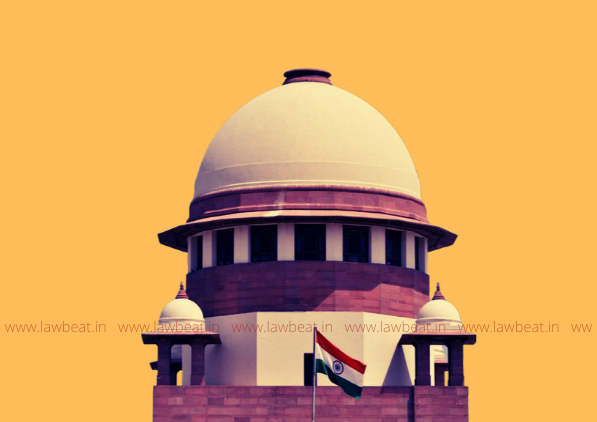Supreme Court Issues Notice In Plea Seeking Transfer Of Petitions For Uniform Age Of Marriage For Men & Women Pending In HC's

The Supreme Court on Tuesday issued notice in a plea seeking transfer of petitions pending before the Rajasthan High Court & Delhi High Court which have sought uniform age of marriage for both men & women.
A bench of Chief Justice SA Bobde, Justices AS Bopanna & V. Ramasubramaniun issued notice to the centre in the plea filed on behalf of Ashwani Kumar Upadhyay.
The petitioner has stated that while men are permitted to marry at the age of 21 years, women are permitted to marry at 18. This, he states are based on a certain stereotypes and completely nullifies what has been envisaged in the International Human Rights obligations. It is contended that discriminatory provisions should be read down to equalise minimum age of marriage for both men and women at 21 years in light of the global trends that point in this direction.
The plea states that India ratified the Convention on the Elimination of All Forms of Discrimination Against Women ("CEDAW") in 1993 in and in terms of the same, India is obligated to "take all appropriate measures… [t]o modify social and cultural patterns of conduct of men and women, with a view to achieving the elimination of prejudices and customary and all other practices which are based on the idea of inferiority or the superiority of either of the sexes or on stereotyped roles for men and women."
The plea highlights the provisions under various legislations which stipulate the age of marriage as being discriminatory:
Section 60(1) of the Indian Christian Marriage Act, 1872;
Section 3(1)(c) of the Parsi Marriage and Divorce Act, 1936;
Section 4(c) of the Special Marriage Act, 1954;
Section 5(iii) of the Hindu Marriage Act, 1955;
Section 2(a) of the Prohibition of Child Marriage Act, 2006.
"This difference in stipulated age of marriage for men and women is based on on patriarchal stereotypes, has no scientific backing, perpetrates de jure and de facto inequality against women, and goes completely against the global trends," the petitioner states.
It is averred that differential limit is de facto unequal as between men-women. It aggravates social inequality, thereby breaching Articles 14,15,21. It is a social reality that women in a married relationship are expected to perform a subordinate role vis-à-vis the husband. Hence, there exists a power imbalance between the husband and wife in most marital relationships. In this context, it is contended,
"A younger spouse is therefore expected to respect and be servile to her elder partner, which aggravates the pre-existing gender-based hierarchy in the marital relationship."
In this context, the petitioner has stated that any provision that perpetrates or reinforces discriminatory stereotypes against a class of persons is manifestly arbitrary and a fortiori violative of Articles 14, 15 and 21.
"Differential age limit is based solely on stereotypes. The Law Commission has observed that there exists no scientific basis for such distinction and that differential limit "simply contributes to the stereotype that wives must be younger than their husbands". Likewise, Committee on Elimination of Discrimination against Women has noted that: "Some countries provide for different ages for marriage for men and women. As such provisions assume incorrectly that women have a different rate of intellectual development from men, or that their stage of physical and intellectual development at marriage is immaterial, these provisions should be abolished. In other countries, the betrothal of girls or undertakings by family members on their behalf is permitted. Such measures contravene not only the Convention, but also women's right freely to choose her partner."
- Excerpt of Plea by Ashwani Kumar Upadhyay
The petitioner contends that since two petitions are pending in two high courts which are more or less common in nature and have similar factual and legal issues, respondents may face extreme difficulty in effectively conducting the same in different Courts and also, that here is every possibility that different judgments and views may be taken by both high courts & thus it be best that all grounds and contentions are decided by a common judgment by the top court.
"For this reason also, all these matters require to be withdrawn from the respective High Courts and be transferred to this Hon'ble Court so that all grounds-contentions can be decided by common judgment in order to ensure uniformity in directions. Moreover, the Judgment by this Hon'ble Court will be binding for all and also save precious time of the judicial system,"
- PIL in SC
Alternatively, the petitioner has prayed for a direction to the Central Government to take appropriate steps to remove the anomalies in the minimum age of marriage and make it 'gender neutral, religion neutral and uniform for all citizens' in spirit of the Articles 14, 15, 21 and International Conventions.
Case Title: Ashwini Kumar Upadhyay Vs. Union of India
